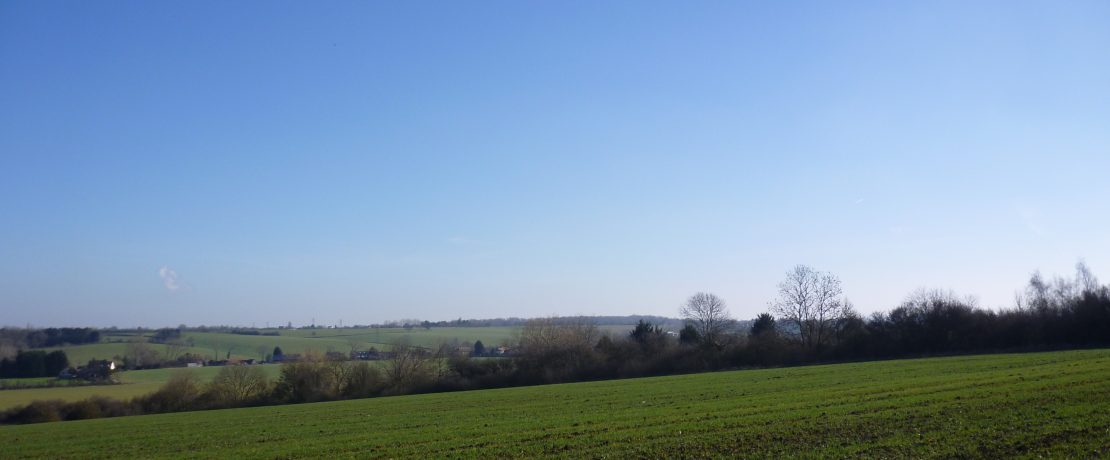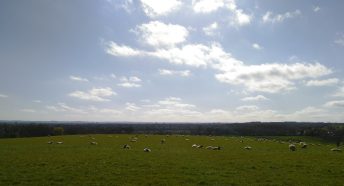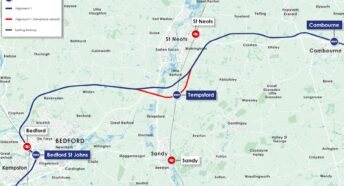What is the Oxford to Cambridge Arc?
We take a look at the OxCam Arc, what it will involve and what it means for the Bedfordshire countryside.
What is the Oxford to Cambridge (OxCam) Arc?
The area consists of a broad swathe of largely undeveloped countryside across Buckinghamshire, Bedfordshire, Cambridgeshire, and Oxfordshire. Plans for the Arc include house building, job creation, road improvements and an east-west rail link.
The story so far
Since 2016 the Government has been promoting a concentration of economic and housing development in an area between Cambridge, Milton Keynes and Oxford, now known as the ‘Oxford to Cambridge (OxCam) Arc’. With that aim in mind, they asked the National Infrastructure Commission (NIC) to look at what was needed to stimulate a major boost to economic growth across the Arc.
In November 2017 the NIC published a report called ‘Partnering for Prosperity’ recommending that a million new homes and a million new jobs should be created in the area by 2050, supported by a major new ‘Expressway’ of near motorway standard from Oxford to Milton Keynes, and a new passenger rail line from Oxford to Cambridge known as ‘East West Rail’.
The Government endorsed the NIC recommendations and in March 2019 issued a Joint Vision Statement agreed with the local authorities located within the Arc – Oxfordshire, Buckinghamshire, Northamptonshire, Bedfordshire and Cambridgeshire. The Joint Vision was also agreed with the Arc’s four Local Enterprise Partnerships (LEPs), and England’s Economic Heartland (EEH), the partnership bodies which bring political and business leaders together to drive economic growth.
In March 2021 Transport Secretary Grant Shapps announced the cancellation of the expressway, after analysis confirmed the proposed project was not cost-effective. However, The Department for Transport will now investigate the need for more targeted road interventions in the area.
The vision for the Arc
Whilst the area of the Arc is recognised as an area of existing economic strength and opportunity, the vision advocates making the region a key economic priority in order to achieve transformation into a world-leading economic area, acting as a ‘testbed for innovation’.
Achieving the vision will involve the development and expansion of existing, as well as new, settlements and the delivery of substantial additional infrastructure ahead of the arrival of new communities.
The vision claims to value the natural environment highly, and offers a commitment to improve, rather than degrade, the environment in the Arc whilst pursuing the economic and housing ambitions.
The vision also states a commitment to involve local communities and businesses in helping to decide where and how infrastructure is built.
What are the issues for the countryside?
The NIC proposals to build a million new houses in the Arc by 2050 represent a doubling of currently planned housing growth for the region and will encourage a population increase of over 1.9 million people.
- The sheer scale of the proposals is demonstrated by the following statistics:
- The distance between Oxford and Cambridge is around 85 miles.
- One million homes are equivalent to 20 cities the size of Cambridge (53,000 homes)
- The entire county of Oxfordshire has 285,000 homes
What are CPRE Bedfordshire’s main concerns?
CPRE Bedfordshire is concerned about the way the Government has approached the development of an accelerated economic growth strategy for the Arc, for three key reasons:
Lack of consultation
Despite the expressed commitment to involve local communities there is a troubling democratic deficit around these plans, with no formal public consultation on the NIC recommendations.
Locally in Bedford Borough and Central Bedfordshire, there has been a complete absence of council-led public debate about the implications of OxCam for our area.
In February 2021 the government announced its intention to develop an OxCam Arc Spatial Framework. As this is not a statutory plan, it will not be subject to formal inspection and scrutiny and is completely at odds with locally driven and democratic planning.
The Spatial Framework will be a major consideration when local authorities in Bedfordshire are preparing Local Plans and will inevitably dictate future growth targets.
Lack of environmental assessment
There has been no formal Strategic Environmental Assessment (SEA) of the impact of the proposals for development in the Arc.
An SEA would look at the impacts of the proposed housing and transport development in a holistic manner, taking in the impact on the countryside, local air and water quality and health, as well as more widely, the impacts on climate change.
Lack of vision for housing
The main priority should be providing the affordable housing needed by existing residents, supported by sustainable public transport.
What does CPRE Bedfordshire want to see?
CPRE Bedfordshire is calling for:
- A full parliamentary inquiry into the proposals
- A proper planning process with local involvement
- An Arc-wide commitment to high standards of affordable housing provision and design
- Protection and improvement of the environment
- Improvements to public transport, not new roads. We support an electrified route B for East-West Rail.
What can local people do?
We urge local communities in the Arc area to make their voice heard on the proposals. CPRE Bedfordshire will continue to provide further information on our website about the latest developments. In the meantime, we encourage local people and community groups who share our concerns and suggested way forward to contact their local MP and councillors.
The Arc proposals urgently need a full, wide-ranging public consultation, including further debate both in Parliament and at the local level.
We’ll keep standing up for the Bedfordshire countryside. Want to stand with us? Sign up now for monthly news on our work or join us as a member from just £3 a month.








